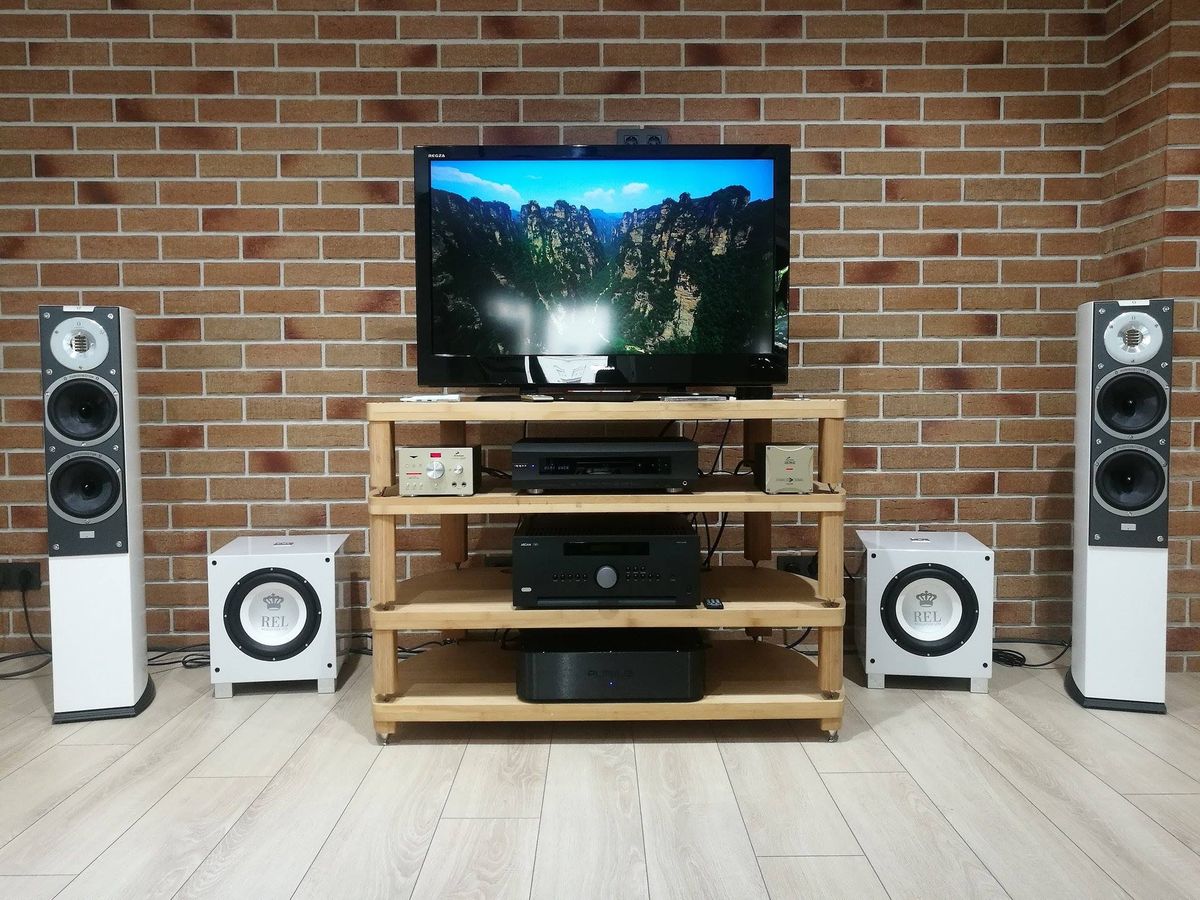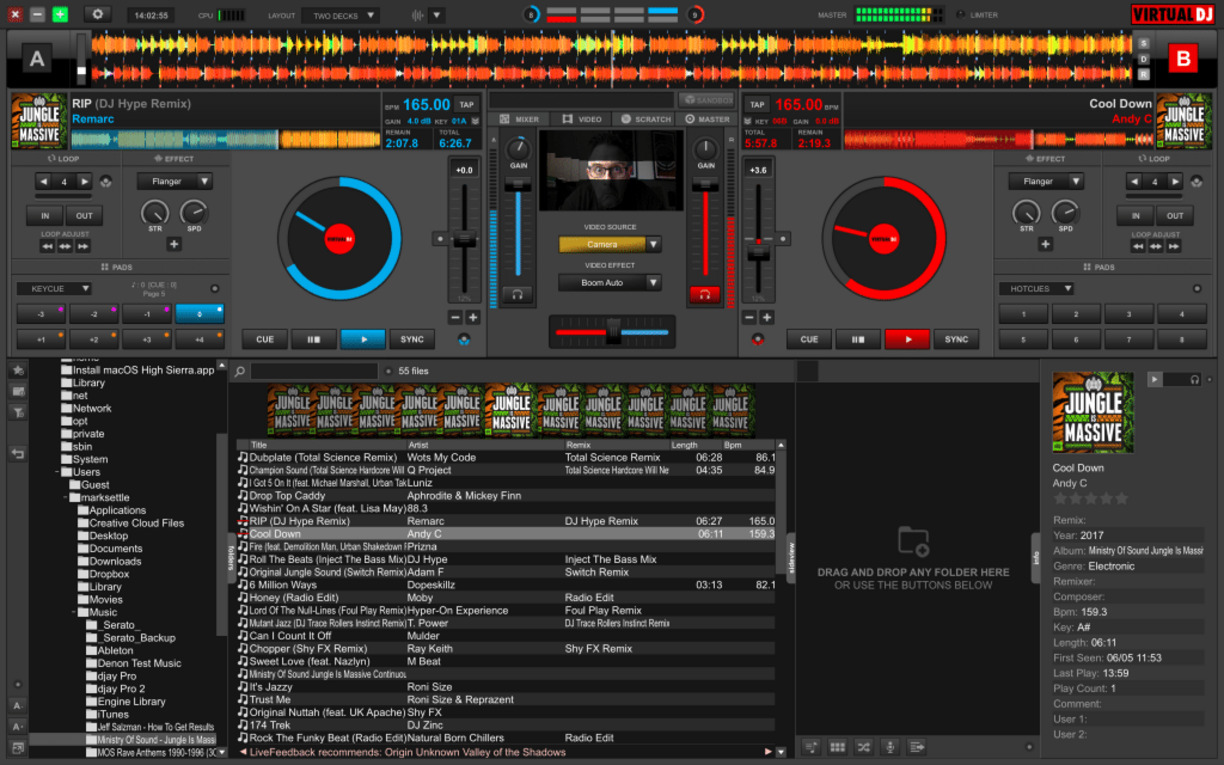Home>Events & Info>Podcast>How To Do Your Own Podcast


Podcast
How To Do Your Own Podcast
Modified: February 17, 2024
Learn how to create and launch your own podcast with our step-by-step guide. Discover expert tips and strategies to make your podcast stand out.
(Many of the links in this article redirect to a specific reviewed product. Your purchase of these products through affiliate links helps to generate commission for AudioLover.com, at no extra cost. Learn more)
Table of Contents
- Introduction
- Step 1: Choosing a Topic
- Step 2: Planning Your Podcast
- Step 3: Gathering Equipment
- Step 4: Recording and Editing
- Step 5: Creating an Intro and Outro
- Step 6: Hosting and Publishing
- Step 7: Promoting Your Podcast
- Step 8: Engaging with Your Audience
- Step 9: Monetizing Your Podcast
- Step 10: Evaluating and Improving Your Podcast
- Conclusion
Introduction
Welcome to the exciting world of podcasting! In recent years, podcasts have exploded in popularity, offering a unique and engaging way to share ideas, stories, and information with a global audience. Whether you are an expert in a particular field, a passionate hobbyist, or just have a compelling story to tell, starting your own podcast is a fantastic way to connect with people who share your interests.
Podcasts have the power to entertain, educate, and inspire listeners from all walks of life. And the best part is, you don’t need a fancy studio or a team of professionals to get started. With a little planning, creativity, and the right tools, you can launch your own podcast and join the ranks of successful podcasters.
In this comprehensive guide, we will walk you through the step-by-step process of creating your own podcast. From choosing a topic and planning your episodes, to recording, editing, and promoting, we’ll cover everything you need to know to get your podcast off the ground.
But before we dive into the nitty-gritty details, let’s take a moment to understand why podcasting is such a powerful medium. Unlike traditional forms of media, podcasts allow listeners to consume content on their own terms. They can tune in while commuting, working out, or even doing household chores. This convenience factor has contributed to the growing popularity of podcasts, making it a valuable platform for reaching a wide and diverse audience.
Furthermore, podcasts offer a sense of authenticity and intimacy. By hearing the voice of the host, listeners develop a personal connection and often feel like they are having a conversation with a friend. This level of engagement can lead to deeper connections and long-term loyalty from your audience.
So, if you’re ready to embark on this exciting podcasting journey, let’s get started with the first step – choosing the perfect topic for your podcast.
Step 1: Choosing a Topic
The first and most important step in creating a podcast is choosing a topic that you are passionate about and that will resonate with your target audience. Your podcast topic should be something you can speak about with authority, enthusiasm, and genuine interest. Here are a few tips to help you choose the perfect topic:
- Identify your expertise and interests: Consider your areas of knowledge, skills, and expertise. What are you passionate about? What topics can you talk about for hours on end? Choosing a topic that aligns with your passion and expertise will make the podcasting process more enjoyable and sustainable in the long run.
- Research the market: Before finalizing your topic, it’s essential to research the market to understand if there is an existing audience and demand for your chosen subject. Look for similar podcasts and assess their popularity, ratings, and reviews. This will give you an idea of the competition and help you identify any gaps or unique angles you can bring to your podcast.
- Consider your target audience: Think about who your ideal listener is. What are their interests, needs, and pain points? Tailoring your podcast to a specific target audience will help you attract and retain loyal listeners. It’s better to go narrow and deep than broad and shallow.
- Brainstorm and refine your ideas: Once you have a list of potential topics, brainstorm and refine your ideas. Consider the value you can provide to your audience, the potential for interesting discussions, and the longevity of the topic. It may be helpful to consult with friends, colleagues, or potential listeners to gather feedback and narrow down your options.
- Choose a unique angle: While there might be many podcasts on a particular topic, finding a unique angle or perspective can set your podcast apart from the rest. Think about how you can bring a fresh voice, unique insights, or a different format to your chosen subject.
Remember, your podcast topic should be something you are genuinely passionate about, as it will require time, effort, and consistency to build a successful podcast. By choosing a topic that resonates with both you and your target audience, you’ll create a solid foundation for your podcasting journey.
Step 2: Planning Your Podcast
Once you have chosen your podcast topic, it’s time to start planning the structure and format of your show. Planning is crucial to ensure a smooth and organized workflow, as well as to create engaging and cohesive episodes. Here are some key steps in the planning process:
- Define your podcast format: Decide on the format that best suits your topic and target audience. Will it be an interview-style show, a solo monologue, a panel discussion, or a combination of different formats? Choose a format that aligns with your strengths and the goals of your podcast.
- Create an episode outline: For each episode, create a detailed outline that includes the main topics, sub-topics, and talking points you want to cover. This will provide structure and guidance during recording, ensuring you stay on track and cover all the essential points.
- Set episode length: Determine the ideal length for your episodes. Consider your topic, the attention span of your target audience, and the amount of content you want to cover. Keep in mind that shorter episodes may be more suitable for specific topics, while longer episodes may be better for in-depth discussions.
- Develop a content calendar: Create a content calendar to plan your episode releases in advance. This will help you stay organized and consistent with your publishing schedule. Consider incorporating seasonal or timely topics to keep your content fresh and relevant.
- Research and prepare: Before recording each episode, thoroughly research your topic and gather any necessary resources or references. This will ensure that you provide accurate and valuable information to your audience. Additionally, prepare any interview questions if applicable, and send them to your guests in advance to give them time to prepare their answers.
- Plan for guest appearances (if applicable): If you plan to have guest appearances on your podcast, reach out to potential guests and schedule them in advance. Coordinate with your guests to ensure smooth logistics and provide any necessary details or guidelines for their participation.
- Create a branding theme: Consider developing a consistent branding theme for your podcast, including a catchy name, logo, and intro/outro music. This will help create a recognizable identity for your show and make it more memorable for your listeners.
Remember, careful planning and preparation are key to delivering high-quality content and maintaining consistency in your podcast. With a well-thought-out structure and format, you’ll be ready to move on to the next step – gathering the necessary equipment for recording.
Step 3: Gathering Equipment
One of the great things about podcasting is that you don’t need expensive or complicated equipment to get started. With a few essential tools, you can achieve professional-quality audio recordings. Here’s a breakdown of the equipment you’ll need:
- Microphone: A good quality microphone is essential for capturing clear and crisp audio. USB microphones are a popular choice for beginners as they are easy to set up and offer decent audio quality. The Audio-Technica ATR2100x-USB and the Blue Yeti USB microphone are highly recommended options that offer excellent value for money. If you’re looking for a more advanced setup, consider investing in a dynamic or condenser XLR microphone along with an audio interface.
- Headphones: A pair of closed-back headphones will help you monitor your audio and detect any issues or background noise during recording. Look for headphones that provide good sound isolation to help you focus on your voice and catch any audio imperfections.
- Pop filter: A pop filter, also known as a windscreen, helps minimize plosive sounds and sibilance that can occur when speaking into the microphone. It acts as a barrier between your mouth and the microphone, reducing unwanted harsh sounds. A simple mesh pop filter attached to your microphone stand will suffice.
- Microphone stand or boom arm: A stable and adjustable microphone stand or boom arm is crucial for holding your microphone in the right position. This will help you achieve optimal sound quality and prevent hand-held microphone noise or movement during recordings.
- Acoustic treatment: Consider the acoustic environment in which you will be recording. If possible, choose a quiet room with minimal background noise and echo. If your recording space has echo or reverberation, you can improve the sound quality by adding acoustic panels or foam to absorb unwanted reflections.
- Recording software: To record and edit your podcast episodes, you’ll need reliable recording software. Audacity and GarageBand are popular free options that offer basic recording and editing capabilities. For more advanced features, Adobe Audition and Reaper are popular choices among podcasters.
Remember, while having high-quality equipment can improve the overall production value of your podcast, the most important aspect is delivering valuable content. Focus on creating engaging episodes and gradually upgrade your equipment as your podcast grows. With your equipment ready, it’s time to move on to the exciting part – recording and editing your podcast episodes.
Step 4: Recording and Editing
Now that you have gathered your equipment, it’s time to start recording your podcast episodes. In this step, we will cover the process of recording and editing your episodes to achieve professional-quality audio.
Recording:
- Select a quiet location: Find a quiet space with minimal background noise where you can record your episodes. Close windows, turn off fans or air conditioners, and eliminate any potential sources of disturbance.
- Maintain proper microphone technique: Position the microphone at a proper distance from your mouth to capture clear and balanced audio. Avoid speaking too close or too far from the microphone and try to maintain a consistent speaking volume.
- Warm up your voice: Before starting the recording, warm up your voice by doing some vocal exercises or reading aloud. This will help improve your vocal clarity and prevent strain during longer recording sessions.
- Record in segments: If you make a mistake or stumble during recording, don’t worry! It’s best to record in segments or chunks of a few minutes at a time. This way, you can easily retake sections without having to redo the entire episode.
- Speak naturally: Aim for a conversational tone and speak naturally as if you were having a dialogue with your audience. Avoid reading from a script word-for-word, but do refer to your episode outline to stay on track.
Editing:
- Remove mistakes and silence: Use audio editing software to remove any mistakes, long pauses, or unnecessary silences. Trim the audio to create a smooth and seamless flow throughout the episode.
- Enhance audio quality: Apply equalization (EQ) and noise reduction techniques to improve the overall sound quality of your recording. Adjust the levels to ensure that your voice is clear and balanced.
- Add music and sound effects: If desired, incorporate background music, jingles, or sound effects into your podcast episodes to enhance the listening experience. However, make sure to use royalty-free or properly licensed music to avoid copyright infringement.
- Include intros and outros: Create a captivating intro to grab your audience’s attention and set the tone for the episode. Similarly, conclude each episode with a memorable outro that encourages listeners to subscribe, leave reviews, or visit your website.
- Export in the appropriate file format: When you’re satisfied with the edited episode, export it in a common audio file format such as MP3 or WAV. This will ensure compatibility with podcast hosting platforms and make it easier for your audience to listen to your episodes.
Editing is an iterative process, so don’t be afraid to experiment and fine-tune your episodes until you achieve the desired result. Once your episode is edited and ready, it’s time to move on to the next step – creating an engaging intro and outro for your podcast.
Step 5: Creating an Intro and Outro
Your podcast intro and outro are like the bookends of your episodes. They not only provide a professional touch but also help to set the tone, create anticipation, and leave a lasting impression on your audience. Here’s how you can create engaging and memorable intro and outro segments:
Intro:
- Hook your audience: Start your intro with a captivating hook that grabs the attention of your listeners. It can be a thought-provoking question, an intriguing statement, or a compelling anecdote related to the topic of your episode.
- Introduce yourself and the podcast: Briefly introduce yourself and your podcast. Share a concise description of what your podcast is about and the value it provides to listeners. Make sure to mention the name of your show and your name or the name of your co-host if applicable.
- Tease the episode: Give your audience a glimpse of what they can expect from the episode. Highlight the main topics or key takeaways and create anticipation for the valuable information or insights you’ll be sharing.
- Include music: Consider adding background music to your intro segment. Choose a piece that matches the tone and theme of your podcast, and ensure that it complements your voice without overpowering it. Remember to use royalty-free or properly licensed music to avoid copyright issues.
Outro:
- Summarize the episode: Provide a brief recap of the main points discussed in the episode. This helps reinforce the key takeaways for your listeners and reminds them of the value they gained from tuning in.
- Encourage engagement: Prompt your listeners to take action, such as subscribing to your podcast, leaving a review, or visiting your website. Including a clear call-to-action in your outro will help grow your audience and increase audience engagement.
- Thank your audience: Express gratitude to your listeners for tuning in and being a part of your podcast journey. Let them know how much you appreciate their support and encourage them to stay connected for future episodes.
- Include music and fade-out: Similar to the intro, consider adding background music to your outro segment. Choose a piece that signifies the end of the episode and gradually fades out as you conclude your message.
Remember, your podcast intro and outro should be concise and engaging. Aim for a length of around 20-30 seconds each, ensuring that they don’t overshadow the main content of your episodes. With a well-crafted intro and outro, you’ll create a professional, cohesive, and memorable podcast experience for your audience.
Step 6: Hosting and Publishing
Once your podcast episodes are recorded and edited, it’s time to find a hosting platform and publish your content for the world to hear. Here’s a step-by-step guide to hosting and publishing your podcast:
- Choose a podcast hosting platform: A podcast hosting platform is where your audio files will be stored and distributed to various podcast directories. Look for a reliable hosting platform that offers features such as unlimited storage, analytics, ease of use, and the ability to generate an RSS feed for your podcast. Popular hosting platforms include Libsyn, Podbean, and Anchor.
- Create an account: Sign up for an account on your chosen hosting platform. Provide the necessary details, such as your podcast name, description, and artwork, to set up your podcast profile.
- Upload your episodes: Use the hosting platform’s interface to upload your edited podcast episodes. Ensure that you follow the recommended audio format and specifications provided by the platform.
- Fill in episode details: Enter the relevant information for each episode, including the episode title, description, show notes, and any guest information. This information will be displayed on podcast directories and help potential listeners discover and engage with your content.
- Create podcast artwork: Design and upload podcast artwork that accurately represents your podcast and catches the attention of potential listeners. The artwork should meet the specific size and format requirements of your chosen hosting platform.
- Generate the RSS feed: Your hosting platform will automatically generate an RSS feed for your podcast. This feed includes information about your episodes and podcast details. This feed is crucial as it allows podcast directories to syndicate your content.
- Submit to podcast directories: Submit your podcast to popular podcast directories like Apple Podcasts, Spotify, Google Podcasts, and others. You will need to provide your podcast’s RSS feed URL, podcast description, artwork, and other relevant information. Once approved, your podcast will be available for streaming and subscription on these platforms.
- Promote your podcast: Start promoting your podcast on your website, social media platforms, and other relevant channels. Encourage your listeners to subscribe, leave reviews, and share your episodes. Engage with your audience through comments, messages, and questions to build a loyal and active listener community.
Remember, hosting your podcast on a reliable platform and submitting it to podcast directories are crucial steps to ensure your content reaches a wider audience. With your podcast hosted and published, you can now focus on the next step – promoting your podcast to attract more listeners and grow your audience.
Step 7: Promoting Your Podcast
Once your podcast is live, it’s time to promote it and spread the word to attract more listeners. Promoting your podcast is essential for gaining visibility, building an audience, and growing your show’s reach. Here are some effective strategies to promote your podcast:
- Share on social media: Utilize popular social media platforms like Facebook, Twitter, Instagram, and LinkedIn to promote your podcast. Create engaging posts, share episode highlights, behind-the-scenes content, and interact with your audience. Don’t forget to include a link to your podcast in your profiles and encourage your followers to subscribe and share.
- Collaborate with influencers: Connect with influencers, bloggers, or industry experts who share a similar audience and collaborate with them. This could involve guest appearances on their podcasts or inviting them as guests on your show. By tapping into their established audience, you can reach a wider group of potential listeners.
- Feature guests on your show: When you have guests on your podcast, ask them to share the episode with their audience. This not only helps promote the episode but also introduces your podcast to a new set of listeners who may be interested in your content.
- Utilize your email list: If you have an existing email list, leverage it to promote your podcast. Send out regular newsletters or dedicated emails with episode updates, highlights, and exclusive content to keep your subscribers engaged and encourage them to tune in.
- Engage with podcast communities: Join podcasting groups and communities on platforms like Reddit, Facebook, and LinkedIn. Participate in discussions, share your expertise, and promote your podcast when relevant. However, be mindful of the community guidelines and avoid spamming or excessive self-promotion.
- Guest blogging and cross-promotion: Reach out to relevant blogs or websites in your niche and offer to write guest posts or contribute content. In exchange, ask if they could promote your podcast in their articles or newsletters. Similarly, consider featuring podcasters in your episodes and ask them to cross-promote your show on their platforms.
- Optimize for search engines: Ensure that your podcast website or landing page is properly optimized for search engines. Use relevant keywords, include clear descriptions, and optimize your podcast episode titles and show notes. This will help improve your discoverability and increase the chances of your podcast appearing in search engine results.
- Encourage audience engagement: Foster a sense of community by encouraging your listeners to leave reviews, rate your podcast, and provide feedback. Respond to comments, messages, and emails from your audience, making them feel valued and engaged. Word-of-mouth recommendations from satisfied listeners can be powerful in attracting new listeners.
Remember, promoting your podcast requires consistent effort and creativity. Experiment with different strategies and track the impact of your promotional activities. By actively promoting your podcast and engaging with your audience, you can steadily grow your listener base and make your podcast a success.
Step 8: Engaging with Your Audience
Engaging with your audience is an essential part of building a loyal and dedicated community around your podcast. By fostering two-way communication and connecting with your listeners, you can strengthen relationships, gain valuable feedback, and create a memorable podcast experience. Here’s how to effectively engage with your audience:
- Respond to comments and messages: Make it a priority to respond to comments on your podcast episodes, social media posts, and direct messages from your listeners. Engage in conversations, answer questions, and show genuine interest in their thoughts and feedback. This level of interaction will make your listeners feel valued and encourage them to continue engaging with your content.
- Create discussion opportunities: Encourage your audience to participate in discussions related to your podcast topics. Pose questions, ask for their opinions, and create polls or surveys to gather their insights. This not only sparks meaningful conversations but also helps you understand the preferences and interests of your listeners better.
- Establish a community platform: Consider creating a dedicated online forum, Facebook group, or Discord server where your audience can connect with each other and discuss your episodes. This community platform can serve as a space for deeper conversations, Q&A sessions, and exclusive content-sharing.
- Feature listener stories or questions: Dedicate segments or episodes to sharing stories or answering questions submitted by your listeners. This gives them a chance to be a part of your podcast and helps foster a sense of belonging within your community.
- Host live Q&A sessions or interviews: Schedule live sessions on social media platforms or through live audio platforms like Clubhouse, where listeners can join in real-time to ask questions or share their thoughts. You can also invite listeners to be a part of interviews or panel discussions on specific topics.
- Create bonus content for your audience: Offer exclusive bonus episodes, behind-the-scenes content, or additional resources that are exclusively available to your dedicated audience. This rewards their loyalty and provides an incentive for listeners to engage more deeply with your podcast.
- Seek feedback and implement suggestions: Regularly seek feedback from your audience through surveys, polls, or direct communication. Ask for suggestions on topics, guests, or improvements they would like to see in your podcast. Actively listen to their input and implement valuable suggestions to enhance the listening experience.
- Show appreciation: Express gratitude to your audience for their support and engagement. Mention listeners by name, highlight their comments or reviews on your episodes, and involve them in shout-outs or acknowledgments during your podcast. Making your audience feel seen and appreciated builds a stronger connection with them.
Remember, engaging with your audience is an ongoing process. Stay active, responsive, and open to feedback. By creating a welcoming and interactive environment, you’ll build a dedicated community of listeners who feel connected to you and your podcast.
Step 9: Monetizing Your Podcast
Once you have built a strong audience base and established your podcast, you may be interested in monetizing your efforts. While podcast monetization can take various forms, it’s important to find strategies that align with your content and provide value to your listeners. Here are some popular methods for monetizing your podcast:
- Sponsorships and advertisements: One of the most common ways to monetize your podcast is through sponsorships and advertisements. Once your podcast has a significant audience, you can approach companies or work with podcast advertising networks to feature sponsored ads or mention products and services relevant to your niche.
- Affiliate marketing: Partner with companies or become an affiliate for products and services that align with your podcast’s content. You can promote these products through your episodes or on your podcast website, and earn a commission for any sales generated through your referral links.
- Membership or subscription model: Consider offering premium or exclusive content to your loyal listeners through a membership or subscription model. This can include bonus episodes, early access to episodes, special Q&A sessions with guests, or exclusive behind-the-scenes content. Subscribers can pay a monthly or annual fee to access this premium content.
- Merchandise sales: Create and sell merchandise featuring your podcast’s branding or catchphrases. This can include t-shirts, hats, mugs, stickers, or other merchandise that resonates with your audience. Set up an online store or partner with an e-commerce platform to manage the sales and fulfillment process.
- Crowdfunding and donations: Engage your community by setting up a crowdfunding campaign or accepting donations from listeners who appreciate your content. Platforms like Patreon allow your audience to contribute a recurring amount or make one-time donations to support your podcast and receive exclusive perks in return.
- Live events and workshops: Organize live events, workshops, or meetups related to your podcast’s niche. This could include live recordings, panel discussions, or workshops where attendees can learn from you and engage with your content in person. Charge ticket fees or workshop fees to generate revenue.
- Sell your expertise: If you are an expert in your niche, consider offering coaching, consulting, or online courses related to your podcast’s content. Leverage your authority and knowledge to provide valuable services that can benefit your audience, and charge a fee for your time and expertise.
- Collaborations and partnerships: Seek opportunities to collaborate with other podcasters, influencers, or brands in your niche. This can involve joint episodes, cross-promotion, or co-creating content. By tapping into each other’s audiences, you can expand your reach and potentially attract monetization opportunities together.
Remember, finding the right monetization strategy takes time and experimentation. It’s important to strike a balance between generating revenue and providing valuable content to your audience. By diversifying your monetization methods and continuously delivering high-quality episodes, you can monetize your podcast while maintaining the trust and loyalty of your listeners.
Step 10: Evaluating and Improving Your Podcast
Continuous evaluation and improvement are crucial for the long-term success of your podcast. By regularly assessing your podcast’s performance, gathering feedback from your audience, and implementing necessary changes, you can refine your content and attract a larger and more engaged audience. Here’s how to evaluate and improve your podcast:
- Monitor analytics and metrics: Utilize podcast analytics tools provided by your hosting platform to track important metrics such as downloads, listen duration, audience demographics, and episode popularity. Analyzing this data will help you understand what resonates with your audience and identify areas for improvement.
- Collect audience feedback: Encourage your listeners to provide honest feedback and suggestions through surveys, ratings, reviews, and direct communication. Pay attention to common themes, constructive criticism, and suggestions for episode topics or improvements. Use this feedback to refine your content and enhance the listener experience.
- Review listener engagement: Take note of the episodes or segments that generate the most engagement from your audience. What topics prompted more comments or questions? Which episodes received the highest listener response? Understanding what resonates with your audience will help you tailor your content to their interests and preferences.
- Stay updated with industry trends: Stay informed about the latest trends and developments in the podcasting industry. This includes keeping up with new podcast formats, emerging technologies, and changes in listener behavior. Adapting to these trends can help you stay relevant and attract a larger audience.
- Regularly review and optimize your episodes: Periodically revisit your older episodes and assess their quality. Consider updating or re-recording episodes to maintain consistency and relevance, particularly if there have been changes in the topic or new information has emerged. This ensures that both new and existing listeners find value in your entire podcast catalog.
- Experiment with different formats and episode lengths: Don’t be afraid to try new formats or episode lengths to see what works best for your audience. Experiment with interviews, panel discussions, solo episodes, or serialized storytelling. Pay attention to the response and engagement metrics to determine the most effective formats for your podcast.
- Improve your interviewing and hosting skills: If your podcast involves interviewing guests or being the host, continuously hone your interviewing and hosting skills. Ask thought-provoking questions, actively listen to your guests, and strive to create engaging and authentic conversations. Seek feedback from your guests and audience to improve your performance.
- Invest in professional development: Continuously invest in your knowledge and skills related to podcasting. Attend industry conferences, take online courses, or join podcasting communities to learn from experts and connect with fellow podcasters. Constantly improving your skills will enhance the overall quality of your podcast episodes.
- Stay consistent and committed: Consistency is vital for podcast growth. Stick to a regular publishing schedule to create a sense of expectation among your listeners. Stay committed to producing high-quality content and engaging with your audience to build trust and loyalty.
Remember, podcasting is an evolving process, and there’s always room for improvement. Embrace feedback, adapt to changes, and continuously refine your podcast to provide value to your audience. By evaluating and improving your podcast regularly, you’ll create an outstanding listening experience that keeps your audience coming back for more.
Conclusion
Congratulations on reaching the end of this comprehensive guide on starting your own podcast! By following the steps outlined in this article, you are well on your way to launching a successful and engaging podcast. Whether you’re podcasting for fun, to share your expertise, or to provide valuable content to your audience, the journey ahead promises exciting opportunities for growth and connection.
Remember, choosing a compelling topic, planning your episodes, gathering the right equipment, and recording and editing with care are the first steps to creating an exceptional podcast. Hosting and publishing your podcast on reputable platforms, promoting it to attract listeners, engaging with your audience, and monetizing your efforts are essential for long-term success.
However, the work doesn’t stop there. Evaluating and improving your podcast is an ongoing process that ensures you deliver the best possible content and maintain a loyal audience. By staying informed of industry trends, collecting feedback, and continuously refining your episodes, you can keep your podcast fresh and relevant.
Starting a podcast requires passion, dedication, and a genuine desire to connect with your audience. It may take time to build a substantial following, but with consistent effort and quality content, your audience will grow organically. Remember that your podcast’s success is not solely measured by the number of downloads or the amount of revenue generated. It’s the impact you have on your listeners, the connections you build, and the value you provide that truly matters.
So, go ahead and take the knowledge you have gained from this guide to embark on your podcasting journey. Embrace your creativity, authenticity, and enthusiasm as you share your unique voice with the world. Be open to learning, adapting, and evolving along the way, and enjoy the process of creating a podcast that resonates with your audience and leaves a lasting impact.











